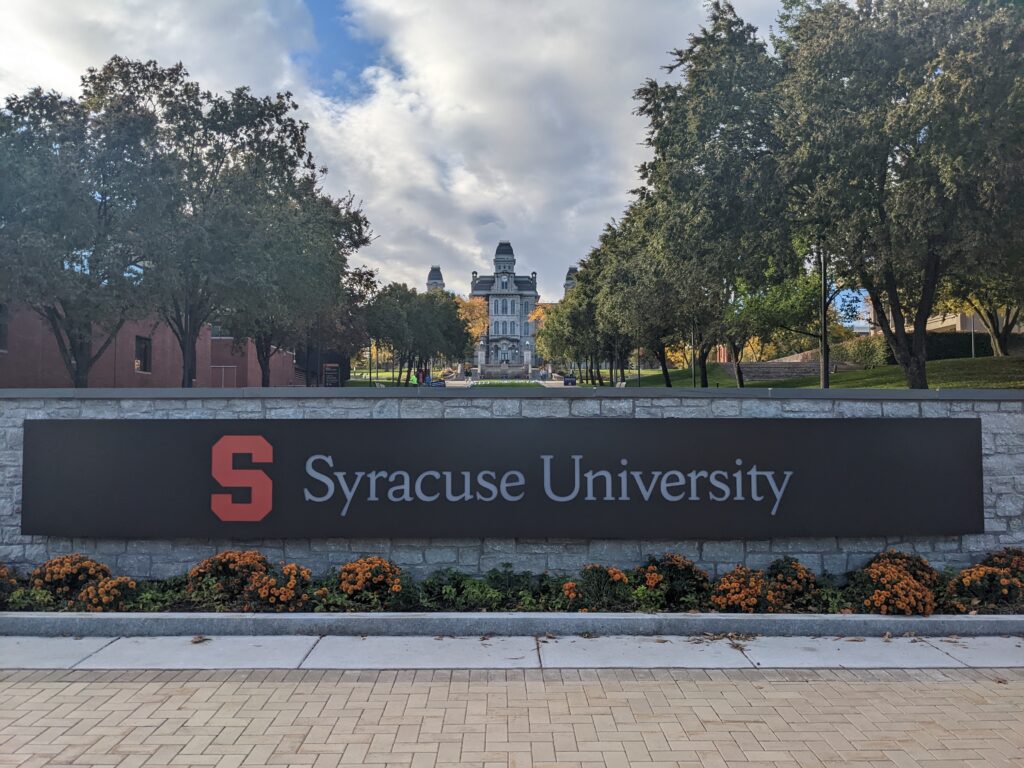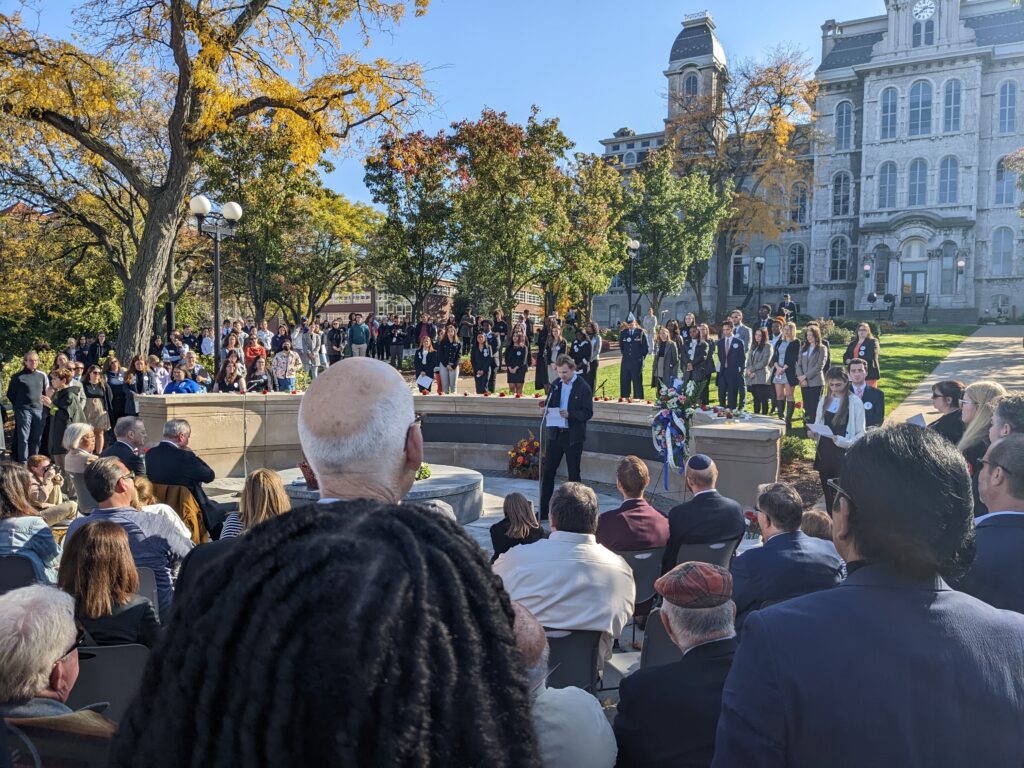In October 2022, NOHUC Researcher Andy Clark undertook a research and engagement trip to Syracuse University, New York. Along with Colin Atkinson, this was part of their British Academy funded project that conducted oral history interviews with first responders to the Lockerbie Disaster, 1988. In this Lug post, Andy reflects on engaging with victim communities in the United States, and how the materials held in the Pan Am 103 archive aligned with the narratives collected in his research.
On December 21st, 1988, Pan American Airways Flight 103 from London to New York was blown up over the town of Lockerbie in Scotland. All 259 people in the aircraft and 11 on the ground were killed, making it the most deadly single terrorist attack in British history. The focus of this project has been to assess its impact on those ‘on the ground’, particularly first responders from policing and mountain rescue volunteer teams. Working with my Co-Investigator Colin Atkinson – who has a professional background in counter-terrorism – we interviewed four volunteers with the Northumberland National Park Mountain Rescue Team and seven retired police officers. Interviews were a mixture of one-to-one conversations and focus group discussions, generating approximately 28 hours of audio recording.

The project was inevitably impacted by Covid-19. The British Academy were incredibly accommodating, and we want to publicly thank them for allowing us to extend the lifetime of the project. As the impacts of Covid and the associated lockdowns and travel restrictions eased, we found ourselves in a situation where we had funds remaining that had originally been budgeted to support national and international conference attendance. We wanted to utilise these to expand the international scope of our work.
Over the course of the project, we learned more about the impact of the disaster on Syracuse University, New York. 35 Syracuse students were on board Pan Am 103, returning home after a semester abroad. As a result, the University has a dedicated archive to the disaster, they organise an annual Remembrance Week, and 37 students are awarded scholarships each year (35 Syracuse students and two students from Lockerbie). In spring 2022 we approached Pan Am 103 Archivist, Vanessa St.Oegger-Menn, and asked if we could visit the archive and participate in Remembrance Week, October 16-22. Vanessa was more than happy welcome us. Our visit included archive work, media appearances, guest lectures for undergraduate courses, and a public lecture at the culmination of Remembrance Week.

The Pan Am 103 Archive is an incredible repository. Before travelling, we requested around 30 boxes to consult during our visit which, whilst a lot of material, inevitably gave us only a partial insight of the archive. We wanted to focus our attention on the impacts of the disaster on Syracuse, at the time and subsequently, and on the loved-ones of victims in the US. The data analysed revealed much that we did not know, and didn’t expect, and we are currently discussing these themes in planning outputs in oral history and criminology journals.

One aspect I want to discuss here is the ways in which the US-focused archives chimed with the narratives of our UK narrators. Those we interviewed reflected on the importance that they placed on dignity and respect in their work, constantly aware that this would have an impact on the grieving process for families of the dead. This theme dominated the first responders’ memory of the operation to recover remains, debris, and potential evidence. For them, the repercussions of their work on loves ones across the world was paramount. This went beyond recovery. For the local police officers in particular, the arrival of family members to the town in the aftermath presented a new range of challenges. They felt the need to welcome visitors, to show hospitality, and answer questions that they had, such as where bodies were recovered.
When we began working at Syracuse, the materials highlighted the importance of this sensitive approach to those in America. The documents demonstrated that there was extensive anger directed towards both Pan Am and the American Government. The families felt that they were ignored, disrespected, and generally treated poorly by agencies in the US as they sought information, and attempted to arrange repatriation of remains. Conversely many made a purposeful comparison with the more positive and respectful treatment they received from police in Scotland, and the impacted communities more broadly. We believe that this analysis is significant in understanding how the first responders’ memory chimes with the historic, international context of the disaster. Our interviewees placed significance on this when explaining their response to the disaster and, likely unbeknown to them (and many in Scotland), this became an important aspect of the public discussion in the US.
Colin and I are currently analysing the oral history and archive materials in preparation for three journal articles. There’ll also be another couple of posts about our trip to Syracuse on The Lug over the next few weeks!
